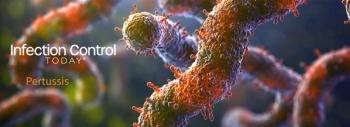
NIH-Created Toxin Can Kill HIV-Infected Cells That Persist Despite Treatment
A team including University of North Carolina and NIH scientists has demonstrated in a mouse model that an HIV-specific poison can kill cells in which the virus is actively reproducing despite antiretroviral therapy. According to the researchers, such a targeted poison could complement antiretroviral therapy, which dramatically reduces the replication of HIV in infected cells but does not eliminate them.
The 40 mice in the experiment were bioengineered to have a human immune system. They were infected with HIV for several months and then given a combination of antiretroviral drugs for four weeks. Half of the animals subsequently received a two-week dose of a genetically designed, HIV-specific poison, or immunotoxin, to complement the antiretrovirals, while the other half continued receiving antiretrovirals alone. The scientists found that, compared to antiretrovirals alone, the addition of the immunotoxin significantly reduced both the number of HIV-infected cells producing the virus in multiple organs and the level of HIV in the blood. According to the researchers, these findings, coupled with results from previous studies, suggest that treating certain HIV-infected people with a combination of antiretrovirals and an immunotoxin might help achieve sustained disease remission, in which HIV can be controlled or eliminated without a lifetime of antiretroviral therapy. However, further study is required, the scientists write.
The immunotoxin, known as 3B3-PE38, was created in 1998 in the laboratories of Edward A. Berger, PhD, of the National Institute of Allergy and Infectious Diseases, and Ira Pastan, PhD, of the National Cancer Institute, both part of NIH. This genetically modified bacterial toxin targets HIV-infected cells and becomes internalized by them, shutting down protein synthesis and triggering cell death. The study was designed by Berger and Pastan in collaboration with J. Victor Garcia, PhD, and colleagues at the University of North Carolina School of Medicine, where the experiments were performed.
Reference: PW Denton et al. Targeted cytotoxic therapy kills persisting HIV-infected cells during ART. PLOS Pathogens DOI: ppat.1003872 (2014).
Source: National Institutes of Health (NIH)
Newsletter
Stay prepared and protected with Infection Control Today's newsletter, delivering essential updates, best practices, and expert insights for infection preventionists.






